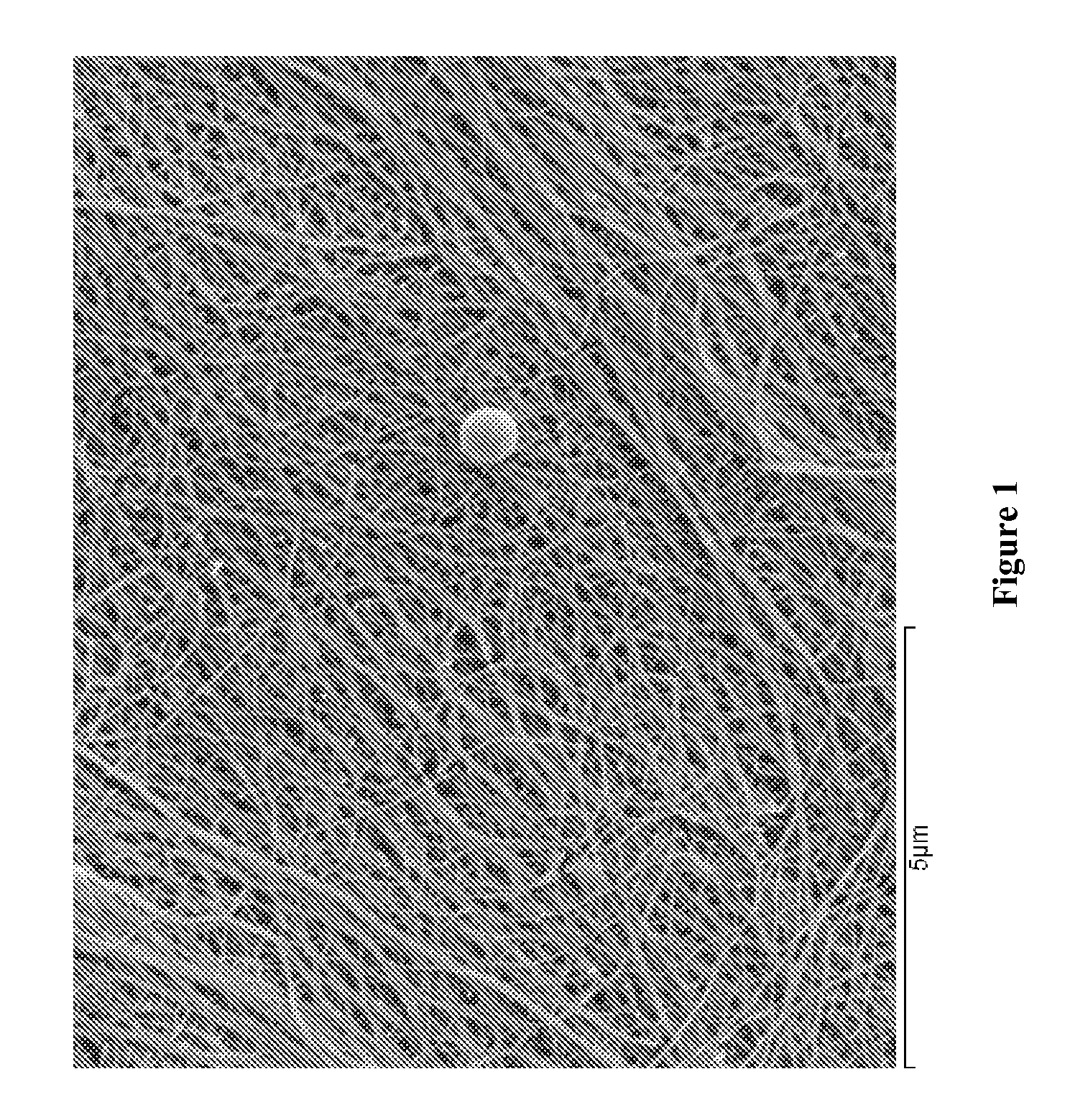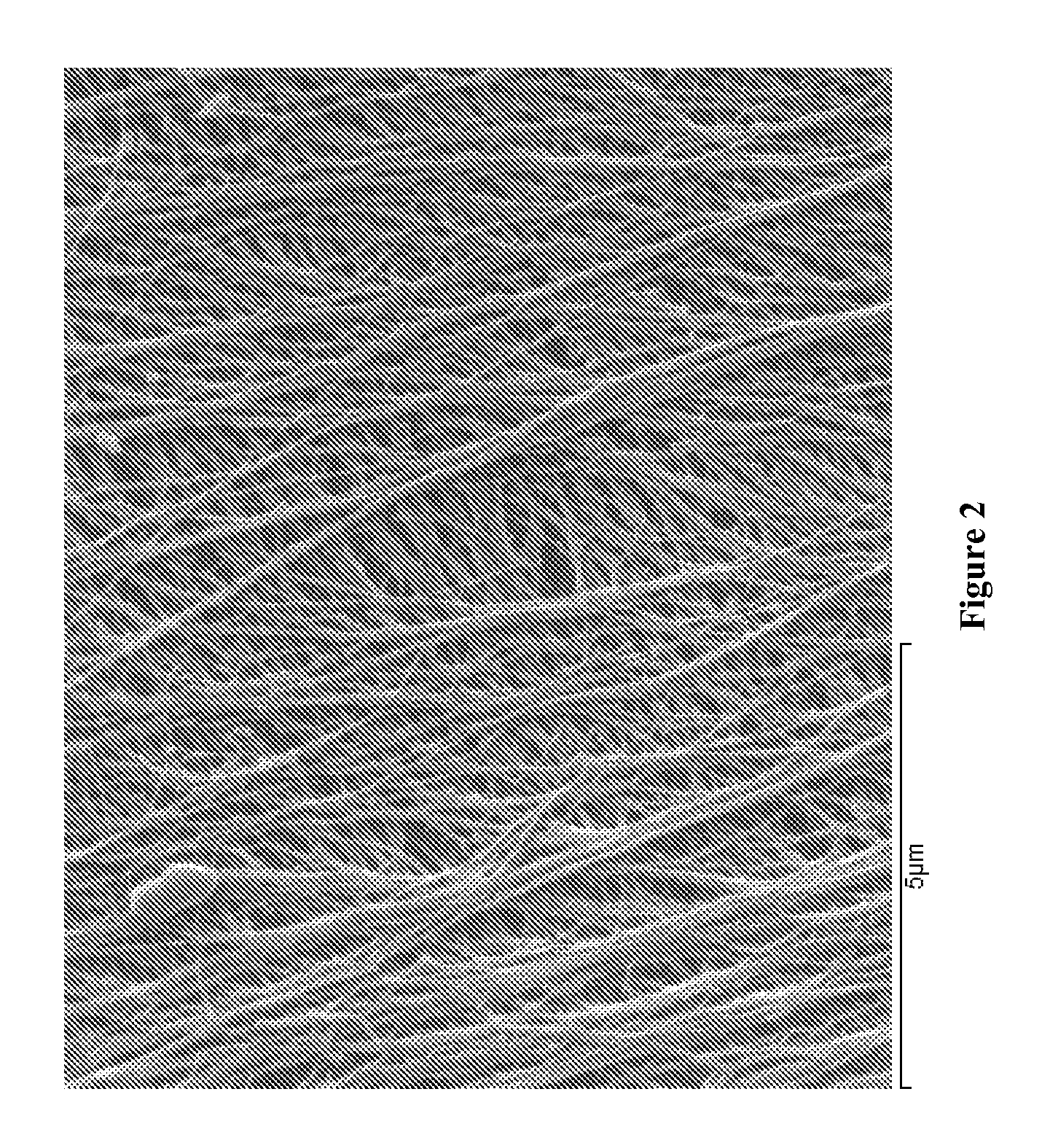Minimal tissue attachment implantable materials
- Summary
- Abstract
- Description
- Claims
- Application Information
AI Technical Summary
Benefits of technology
Problems solved by technology
Method used
Image
Examples
working examples
NON-LIMITING WORKING EXAMPLES
[0037]The following examples are given to illustrate the present invention. It should be understood, however, that the invention is not to be limited to the specific conditions or details described in these examples. Throughout the specification, any and all references are specifically incorporated into this patent application by reference.
example 1
Production of Microbial Cellulose by Acetobacter Xylinum
[0038]This example describes the production of microbial cellulose by Acetobacter xylinum suitable for use in preparing a minimum tissue attachment (MTA) material. The production involved the inoculation of sterilized medium with A. xylinum from a propagation vessel prior to incubation. The inoculated medium was then used to fill bioreactor trays to a fixed volume, including 30, 50, 110, and 530 g (and thus “Sample 30,” Sample 50,” Sample 110,” and Sample 530”). The fill volume refers to the amount of inoculated media added to a bioreactor tray with a maximum volume of 590 g. A higher fill volume represents a finished product with a higher cellulose content. The trays were covered with a plastic sheet with aeration ports added for oxygen exposure during growth. Trays were then incubated under static conditions at a fixed temperature of 30° C. until optimal growth was achieved (4 to 35 days, depending on the initial volume of m...
example 2
Processing of Microbial Cellulose
[0040]The microbial cellulose produced according to Example 1 was subjected to a series of chemical processes to clean and whiten its appearance. Prior to chemical processing, the pellicles were pressed with a pneumatic press to achieve the desired extraction weight.
[0041]The pressed cellulose pellicles underwent chemical processing that included a dynamic soak in a heated tank of caustic solution for approximately one hour to depyrogenate the material. This chemical process was followed by a continuous rinse with filtered water to remove the caustic solution from the processed pellicles. Subsequent to rinsing, an additional chemical oxidizing agent, hydrogen peroxide was used to whiten the pellicles. Following chemical processing, the microbial cellulose films were again subjected to dehydration in a pneumatic press to achieve a pre-designated weight or thickness and then subjected to post-chemical processing steps, as described below.
PUM
| Property | Measurement | Unit |
|---|---|---|
| Time | aaaaa | aaaaa |
| Time | aaaaa | aaaaa |
| Pore size | aaaaa | aaaaa |
Abstract
Description
Claims
Application Information
 Login to View More
Login to View More - R&D
- Intellectual Property
- Life Sciences
- Materials
- Tech Scout
- Unparalleled Data Quality
- Higher Quality Content
- 60% Fewer Hallucinations
Browse by: Latest US Patents, China's latest patents, Technical Efficacy Thesaurus, Application Domain, Technology Topic, Popular Technical Reports.
© 2025 PatSnap. All rights reserved.Legal|Privacy policy|Modern Slavery Act Transparency Statement|Sitemap|About US| Contact US: help@patsnap.com


